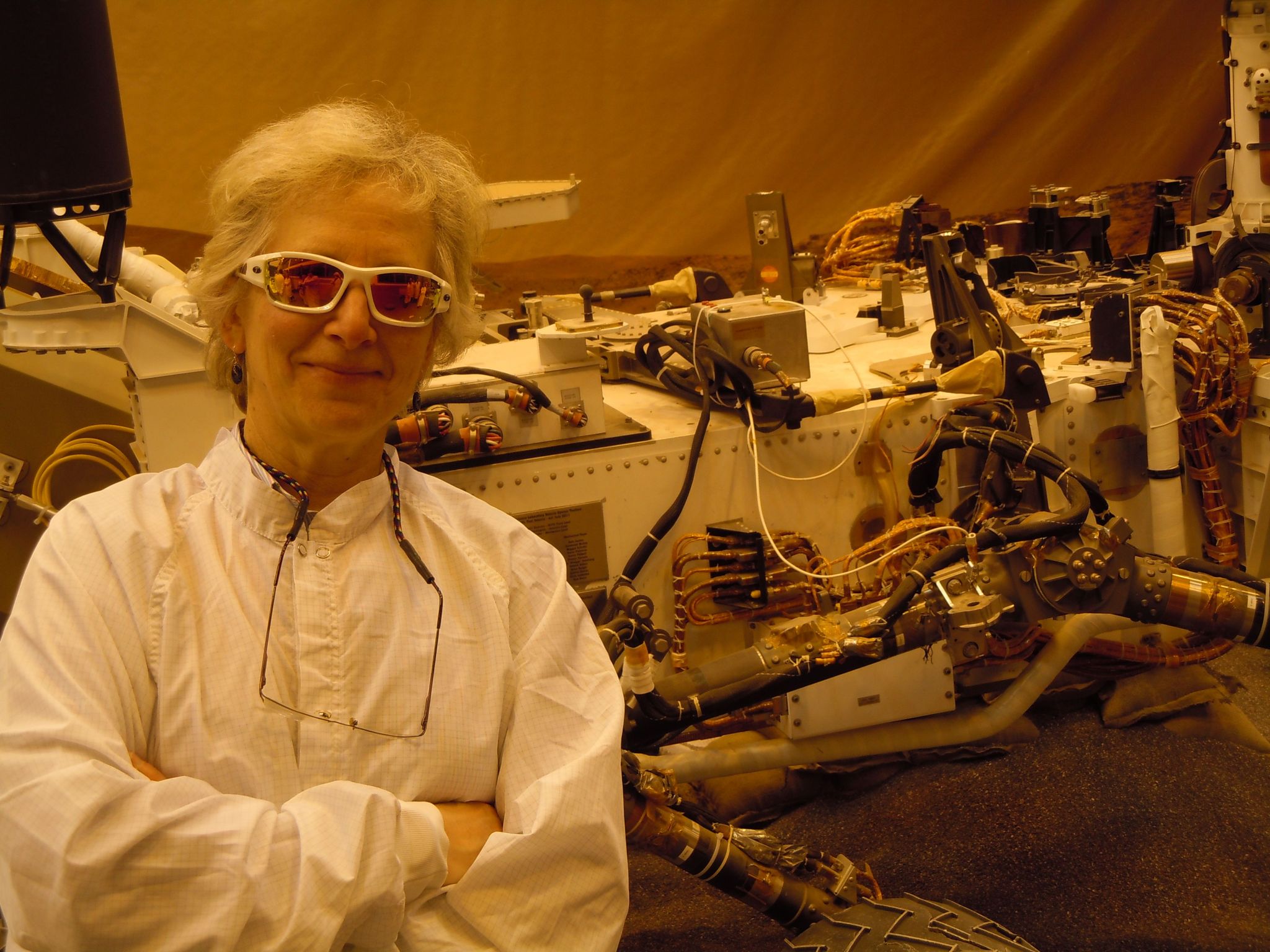Part One of Two
Name: Pamela Conrad
Title: Deputy Principal Investigator for Sample Analysis at Mars and Scientific Co-Investigator and Instrument Scientist for the Sample Analysis at Mars instrument suite.
Formal Job Classification: Research space scientist
Organization: Code 699, Planetary Environments Laboratory, Science and Exploration Directorate
Scientist Pamela Conrad helps give Curiosity a daily to-do list to look for life’s building blocks on Mars.
What do you do and what is most interesting about your role here at Goddard? How do you help support Goddard’s mission?
I try to figure out what makes a planet habitable and, beyond that, if anything actually does live there. I’m presently focusing on Mars.
How do you test for habitability of a planet?
This is a complex problem that involves a lot of things, including asking questions about chemical composition and the physics of an environment. For example, you could have all the right chemical ingredients for life, but if it’s too hot or too cold, then there probably won’t be any life. You need the right materials and the right conditions at the same time to support life.
One of the problems associated with assessing a planet’s ability to support life is deciding how often you have to do measurements in order to get the whole picture of what an environment is really like: what is the sampling rate? If the light fluctuates diurnally and seasonally, you have to measure it often enough to get an accurate picture of that fluctuation.
How do you find clues about what happened to a material millions of years ago?
We’re developing a state-of-the-art laboratory here at Goddard to measure the isotopes of noble gases in various rock, mineral and water from the Earth and other places as delivered by meteorites. While other things can change, as various forces act upon these forces, these gases remain inert. The only thing that changes about them is the ratio of one to another or the ratio of different isotopes, the heavy and light versions of each of these gases. These give us clues about processes which happened over millions of years that are less ambiguous than other processes you can study about natural materials such as rocks, atmosphere and sea water.
Once material is created, what happens to it over billions of years? We have a discrete set of raw materials in the universe that make up life. Stars, planets, people, microbes and even dust are all made out of a finite set of chemical elements. How these things move through time and space determines whether an atom will end up in a star or a microbe.
What interests you the most about your work?
Any time you conduct a scientific investigation, you are forming a model as you get data. And models aren’t perfect, so they only work to a certain extent. If the initial assumptions are incorrect or change, the model stops working. So we try to come up with new models that are consistent with the things we observe and measure.
I tend to think of everything both in terms of space and time because everything that happens involves space and time. Models are also limited in their extent. Here is where it gets hard to think about. Models are not just limited by space and by time, they are also limited by the extremes of our assumptions. An example of this would be how many different chemicals are in a particular environment. If you only have six chemicals, you work with these six chemicals which become your universe. If you have 100 chemicals, it becomes many times more complicated. Wrapping your brain around all the combinations of the chemicals, and all the combination of other physical factors like temperature, radiation and how fast those things change, gives you a really complex universe to contemplate. Figuring out what ingredients and conditions facilitate the formation and maintenance of life is a really complicated problem and chemistry is not enough to characterize an environment’s habitability potential. That’s why I have to take an interdisciplinary approach.
Do you think that we will find an environment that could support life?
Yes. We do not all agree on what makes an environment habitable. I think that there are lots of factors involved. Figuring out that list of factors is very important.
It’s very clean! And organized!
Come back next week for Part 2 of Pamela Conrad’s interview
Read more Conversations With Goddard
Also read about what our people do Outside Goddard



























